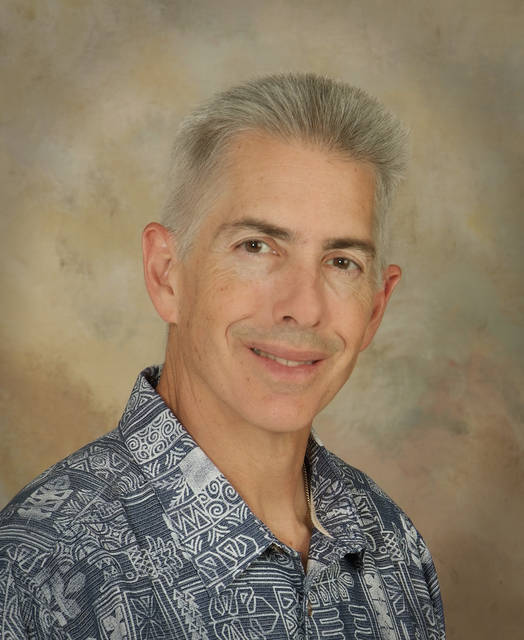HILO — Hawaii Island health professionals want community members to remain calm — even though new guidelines say about 46 percent of U.S. adults are now considered to have high blood pressure.
The new guidelines were announced Monday. High blood pressure, or hypertension, used to be defined as 140/90. According to the American College of Cardiology, blood pressure guidelines are:
• Normal: Less than 120/less than 80
• Elevated: 120-129/less than 80
• Hypertension Stage 1: 130-139/80-89
• Hypertension Stage 2: Greater than or equal to 140/greater than or equal to 90
The change comes from a 2017 update of a 2003 report called the “Seventh Report of the Joint National Committee on Prevention, Detection, Evaluation and Treatment of High Blood Pressure.”
The report’s guidance has been adopted by organizations such as the ACC, the American College of Preventive Medicine, the American Heart Association and several others. Physicians and other health practitioners follow the research-based recommendations of such groups when considering which treatments to offer patients.
On Hawaii Island, many patients have multiple co-occurring chronic health conditions, such as diabetes, obesity and high blood pressure, said Bay Clinic Medical Director Dr. Chrissy Capati. Such individuals are at higher risk of developing heart disease than the general population.
“People have been sort of falsely reassured,” said Hilo Medical Center Cardiologist Dr. David Griffin.
He said the new guidelines, however, can help people counteract high blood pressure by starting to control it early, thereby preventing or delaying development of heart disease.
“If we wait until we’re 140/90,” Griffin said, “we’re sort of missing the boat.”
He advises working against high blood pressure early, to prevent it from getting out of control.
Capati, a board-certified family physician, said patients can make significant difference in blood pressure by ceasing to smoke tobacco products and exercising.
“Smoking is one of the biggest risk factors people have for developing high blood pressure, and all the things that come along with that,” she said.
Griffin also suggests stress relief as an important treatment option, eating a healthy diet and considering lifestyle changes “first and foremost” as treatment options. Losing 10 pounds during the course of a year will significantly affect blood pressure, he said, as will walking 30 minutes a day for six days a week.
Salt intake is another factor in high blood pressure, but not everybody needs to decrease how much salt they eat, Griffin said, emphasizing “it really starts with a conversation with your family doctor.”
Recommendations for a heart-healthy diet include reducing salt and incorporating potassium-rich foods such as bananas, potatoes, avocados and dark leafy vegetables. Losing weight, quitting cigarettes, cutting back on alcohol and increasing physical activity also help heart health.
A physician will determine a person’s risk factors and treatment options, Griffin said. Most people considered newly hypertensive will not need medicine.
He and Capati said there are multiple anti-hypertensive drugs available for those who do need them, including low-cost, generic diuretics, beta blockers and calcium channel blockers. Griffin said side effects of medicines can be compensated for, such as the muscle aches and cramps that can occur with diuretics. People at greater risk, such as those with diabetes, a prior stroke or prior heart attack, should consider more aggressive treatment, in consultation with their health provider.
“Work with your physician to make sure that you mitigate side effects,” Griffin said. “It’s a partnership with your doctor.”
The new blood pressure guidelines — in the works for about three years and based on hundreds of studies and clinical trials — don’t suggest a massive increase in the number of people who will need to take medication to control hypertension.
Of the estimated 14 percent more adults to be classified with high blood pressure, about one in five will need medication, according to Dr. Paul Whelton, who chaired the guideline writing committee. But taking into account the overall population of adults who now will have hypertension, the guide predicts only a small percentage more should be prescribed medicine for it, compared with the previous recommendations released in 2003.
The new guidelines, published in the AHA’s journal Hypertension, emphasize that doctors need to focus on a whole framework of healthier lifestyle changes for patients.
“We need to send the message that yes, you are at increased risk and these are the things you should be doing,” said Whelton, chairman of global public health at Tulane University in New Orleans. “I’m not saying it’s easy to change our lifestyles, but that should be first and foremost.”
Capati said blood pressure also isn’t a one-time check. Rather, physicians watch for a pattern of high readings.
And is it your blood pressure — or the doctor?
“White coat syndrome” happens when patients get stressed into high blood pressure when at the doctor’s office.
Capati said if a patient keeps a home blood-pressure log it can help the physician know if white coat syndrome is a factor.
“It’s a real thing,” she said. “It really does happen.”
Often called the “silent killer” because there can be no obvious symptoms, hypertension accounts for more heart disease and stroke deaths than almost all other preventable causes. It’s second only to smoking.
American Heart Association News contributed to this article.
Email Jeff Hansel at jhansel@hawaiitribune-herald.com.









